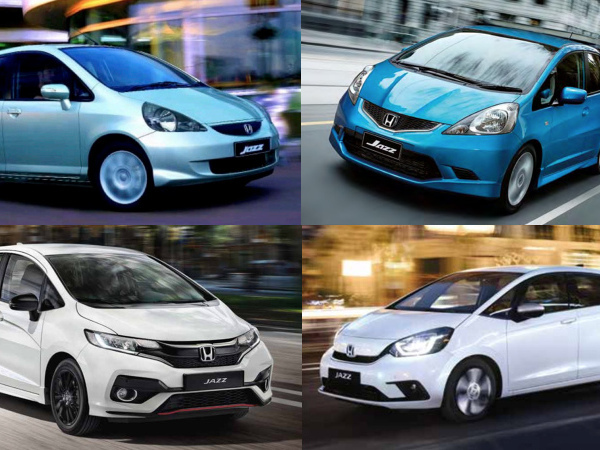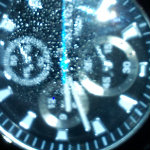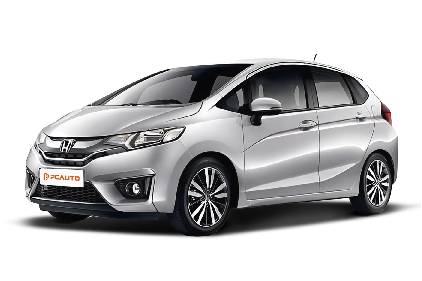Q
How to replace the rear wiper blades on Honda Jazz?
Changing the rear wiper blade on a Honda Jazz is actually super straightforward. First off, you need to grab the right replacement blade. The common size here in Malaysia is a 16-inch dedicated rear wiper, which you can pick up at Honda's original parts counter or any major auto parts store. When you're buying, just double-check that the packaging mentions compatibility with Honda Jazz/Fit GD/GE models.
To do the swap, start by gently lifting the wiper arm up to a vertical position—be careful not to let that metal arm snap back down suddenly, or you might crack the rear window. Next, find the release tab on the wiper blade connector, usually in the middle. Press that tab with your thumb and, at the same time, slide the wiper blade towards the rear of the car to pop it off. Installing the new one is just the reverse: slide it on until you hear a solid "click," which means it's locked in place. Then carefully lower the wiper arm back down.
I'd recommend changing it every year or whenever you notice the cleaning performance dropping—Malaysia's rainy weather really takes a toll on rubber, accelerating wear. A pro tip: when parking, try lifting the wiper blades up to prevent the rubber from sticking to the hot glass. Also, keep an eye on the rear wiper's spray nozzle; it can get clogged with wax residue. A quick fix is to gently unclog it with a thin needle. Oh, and these little maintenance tricks work for most other cars too, not just the Jazz.
Special Disclaimer: This content is published by users and does not represent the views or position of PCauto.
Related Q&A
Q
What Segment is Honda Jazz?
The Honda Jazz is classified as a B-Segment small hatchback in the Malaysian market. This segment is typically characterized by flexible handling, economic practicality, and convenience for urban commuting, making it suitable for Malaysia's narrow streets and high fuel costs. The Jazz has become a popular choice in this segment, especially among young families and urban commuters, thanks to its iconic "Magic Seat" flexible seating design, efficient Earth Dreams engine technology, and spacious interior within a compact body.
In the Malaysian market, competing models in the same segment include the Toyota Yaris and Perodua Myvi. However, the Jazz is well - known for the high resale value and reliability of the Honda brand. It's worth noting that B - Segment vehicles in the Southeast Asian market generally prioritize fuel economy and maintenance costs. The combination of the Jazz's 1.5L i - VTEC engine and CVT transmission can achieve an actual fuel consumption of over 15 km/L, meeting the local consumers' demand for practicality.
In addition, this vehicle line was upgraded to a hybrid version in some global markets in 2021. However, the current models in Malaysia still mainly use traditional fuel power. Whether a new energy version will be introduced in the future depends on Honda's regional strategic adjustments.
Q
What is the Reslae Value of Honda Jazz?
The resale value of the Honda Jazz in the Malaysian used - car market is relatively stable. This is due to its reliable quality, low fuel consumption, and the high local recognition of the Honda brand. Depending on the vehicle's age, mileage, and condition, a 3 - to 5 - year - old Jazz can usually retain 50% - 65% of its original price. The Hybrid models may have a 5% - 8% premium because of their energy - saving features.
The key factors affecting its residual value include regular maintenance records (especially the maintenance of the CVT transmission), the body color (white and silver are more popular), and whether it is still within the original factory warranty period. It is recommended that car owners keep complete maintenance receipts and use original factory parts to maximize the vehicle's value retention.
Among its peers, the used - car price performance of the Jazz is better than some of its competitors. This is related to its flexible space design (such as the ULTRA seat system) and low failure rate. However, the specific transaction price still needs to refer to the real - time data on used - car platforms like Carlist or mytukar.
It's worth noting that the tax - exemption policy for domestic cars introduced in some regions after 2020 has slightly affected the price fluctuations of imported used cars. But as a cost - effective urban vehicle, the demand for the Jazz remains strong in urban areas like the Klang Valley.
Q
How Many CC is Honda Jazz?
The Honda Jazz models available in the Malaysian market are mainly equipped with a 1.5 - liter naturally aspirated engine with a displacement of 1497cc (cubic centimeters). This is a common 'golden displacement' for compact hatchbacks, balancing fuel economy and power performance. This engine uses Honda's i - VTEC technology, capable of outputting approximately 120 horsepower and 145 Nm of torque. It is paired with a CVT transmission or a 6 - speed manual transmission (depending on the version), which is suitable for urban commuting and flexible driving.
It's worth noting that while the displacement (CC) affects power output, the actual driving experience also depends on engine tuning, vehicle weight, and the matching of the transmission system. For example, Honda has optimized the combustion efficiency of the Jazz through Earth Dreams technology, making the torque more abundant at low speeds. Malaysian customers can also pay attention to the minor changes in different model years when making a choice. For instance, some versions after 2020 have upgraded the Honda SENSING safety system.
Similar models in the same class, such as the Toyota Yaris or Perodua Myvi, also use a similar displacement, but they have different technological focuses. It is recommended to take test drives for comparison. Additionally, Malaysia's automotive tax structure gives vehicles with a displacement below 1.5 liters a price advantage, which is also one of the reasons why the Jazz has been popular for a long time.
Q
What is the Engine in Honda Jazz?
The Honda Jazz available in the Malaysian market is equipped with a 1.5-liter i-VTEC naturally aspirated gasoline engine. This engine is well - known for its high efficiency and reliability. It has a maximum output power of approximately 120 horsepower and a peak torque of 145 Nm, making it suitable for city driving and daily commuting while also taking fuel economy into account.
This engine adopts Honda's classic i-VTEC technology, which optimizes power output and fuel consumption through an intelligent variable valve timing and lift system. Paired with a CVT continuously variable transmission, it offers a smooth driving experience.
In addition, the Honda Jazz also comes in a hybrid version (such as the e:HEV). It combines a 1.5-liter Atkinson cycle engine with a dual - motor system, further enhancing energy - saving efficiency, which is ideal for consumers with higher environmental protection requirements.
For Malaysian users, the durability and low maintenance cost of this engine are also among the reasons for its popularity. Moreover, Honda's after - sales service network covers the whole country, providing convenience for car owners. When it comes to the used - car market, the engine of the Jazz also has a relatively high resale value, making it an economical and practical choice.
Q
What is the Gearbox Type of Honda Jazz?
The transmission types vary among different versions of the Honda Jazz. Specifically, the 2019 Honda Jazz 1.5 S, 1.5 E, and 1.5 V versions all come with a CVT (Continuously Variable Transmission). This type of transmission offers a smooth shifting experience, making the driving process even more seamless and also helping to improve fuel efficiency.
On the other hand, the 2019 Honda Jazz 1.5 Hybrid version is equipped with a DCT (Dual-Clutch Transmission). A dual-clutch transmission allows for rapid gear changes and highly efficient power transfer, which can enhance the vehicle's dynamic performance and driving pleasure to some extent.
Each type of transmission has its own unique features. Consumers can choose the appropriate model according to their driving habits and needs.
Q
What is the PCD Size of Honda Jazz?
The PCD (Pitch Circle Diameter) size of the Honda Jazz is 4x100, which means its wheels have 4 bolt holes, and the centers of these holes are distributed on a circle with a diameter of 100 millimeters. This specification is very common in the Malaysian market and is suitable for many economy and compact cars. Understanding the PCD size is crucial when replacing wheels or upgrading tires because if the PCD doesn't match, the wheels won't be installed correctly, which may affect driving safety.
Apart from the PCD, when choosing wheels, you also need to pay attention to the center bore diameter (CB) and the offset value (ET) to ensure full compatibility. Owners of the Honda Jazz can choose factory - spec wheels or wheels from other brands that meet the 4x100 PCD when modifying their wheels. However, it is recommended to choose certified products to ensure quality and safety.
In addition, when modifying wheels, you need to pay attention to the traffic regulations in Malaysia to ensure that the modified vehicle meets local standards and avoid penalties for violations.
Q
Does Honda Jazz Support Apple Carplay?
Yes, some models of the Honda Jazz in Malaysia are indeed equipped with Apple CarPlay, especially the higher - spec versions like the Honda Jazz RS or Honda Jazz Hybrid. These models usually come with a touch - screen infotainment system that's compatible with Apple CarPlay. This allows users to connect their iPhones via a data cable and use functions such as navigation, music, and making calls. It's important to note that there might be differences in Jazz models of different years and configurations. It's recommended to confirm the specific features with the dealer before purchasing. The addition of Apple CarPlay significantly enhances driving convenience, enabling users to use common phone functions more safely without having to take their eyes off the road to operate their phones.
Moreover, the Honda Jazz is well - loved by Malaysian users for its flexible interior space design and fuel efficiency. It's ideal for city commuting and small families. If you have high requirements for in - car connectivity features, you can also look into similar configurations of other models in the same class, such as the Toyota Yaris or Mazda 2, to make a more suitable choice.
Q
What is the Tyre Brand of Honda Jazz?
The original-equipment tire brands for the Honda Jazz in the Malaysian market may vary depending on the model year and configuration. Common tire - supplying brands include mainstream manufacturers such as Dunlop, Yokohama, or Bridgestone. These brands are well-known for their wear resistance and wet - surface performance, which meet the requirements of the rainy climate in Southeast Asia. Car owners can confirm the specific tire model through the sidewall markings or the user manual. For example, the Dunlop ENASAVE EC300+ is a common choice for high-efficiency and energy-saving tires in recent years.
It's worth noting that since tires are consumable items, when replacing them, in addition to the original-factory specifications, you can also consider silent and comfortable products like the Michelin Primacy 4 or the Continental UC6. However, you must ensure that the size (such as 185/55 R16), load index, and speed rating meet the matching requirements of the Jazz's suspension setup and ABS system.
Regularly checking the tire pressure (it is recommended to do it once a month) and wheel alignment can extend the tire life. Especially on the high-temperature roads in Malaysia, the rubber ages more quickly. If the tread depth is found to be less than 1.6 millimeters, you should replace the tires immediately to comply with JPJ regulations.
Q
Is Honda Jazz a Good Car? Learn the Pros and Cons Here!
The Honda Jazz is a highly favored small hatchback in Malaysia. Its advantages include a flexible body size that is suitable for city driving, and it offers economical fuel consumption. The 1.5-liter i-VTEC engine it is equipped with provides smooth and reliable power. The interior space is cleverly designed. In particular, the "Magic Seats" allow for flexible adjustment of the storage space, making it suitable for families or young consumers. Moreover, the Honda brand has an extensive after-sales service network in Malaysia, making maintenance relatively convenient.
However, it does have some drawbacks. Its sound insulation is average, and wind noise is quite obvious when driving at high speeds. The rear suspension is tuned to be on the stiffer side, which affects comfort to some extent. Also, its configuration may not be as rich as that of its competitors in the same class.
For buyers with a limited budget who value practicality and brand reliability, the Jazz is a worthy option to consider. But if you're looking for higher comfort or more advanced technological features, you may need to compare other models.
In Malaysia's hot and rainy climate, it is recommended to regularly check the air-conditioning system and the anti-rust condition of the chassis to extend the vehicle's lifespan.
Q
What is the Width of Honda Jazz?
The body width of the Honda Jazz is 1,694 millimeters. This dimension is considered moderate among the common city compact cars in Malaysia. It can ensure that the interior lateral space is sufficient for three adults to sit comfortably, and at the same time, it can also flexibly maneuver through the narrow streets of Kuala Lumpur or the old shopping mall parking lots. As a global strategic model of Honda, the compact body design of the Jazz is particularly suitable for the winding mountain roads and congested urban roads in Malaysia. The MM concept (minimizing the mechanical space and maximizing the interior space) it adopts enables the 1,694-millimeter body width to achieve a class - leading interior space utilization rate. The magic seats in the rear can be folded in multiple combinations, which is very practical when carrying large items such as potted plants or durians.
It's worth noting that when purchasing a compact car in Malaysia, besides paying attention to the body width, you should also take note of the overall width data when the rear - view mirrors are unfolded. This is especially important for the local road conditions where motorcycles often shuttle through. The electric folding rear - view mirror function of the Jazz can handle this situation very well.
Latest Q&A
Q
How many miles per gallon does the Dodge Charger achieve?
The Dodge Charger's fuel economy varies depending on the specific trim and engine setup. Take the rear-wheel-drive model with the 3.6L V6, for example—it'll sip around 19-23 MPG in the city and stretch to 30-31 MPG on the highway. Step up to the high-performance 6.4L V8 HEMI, and you're looking at roughly 15-17 MPG in urban driving and 24-25 MPG out on the open road. If you opt for the even more beastly 6.2L supercharged V8 in the Charger SRT Hellcat, city fuel economy drops to about 12-13 MPG, with highway figures coming in at 21-22 MPG.
For our readers in Malaysia, keep in mind these numbers are based on U.S. EPA testing standards. Real-world fuel efficiency can vary depending on your driving style, road conditions, and fuel quality. Since Malaysia uses the metric system, you can convert these MPG figures to liters per 100 kilometers for easier reference (1 MPG ≈ 0.425 km/L).
Also, hybrid or future electric versions could offer better efficiency down the line. Before making a purchase, it's smart to check local specifications and tax policies—big-displacement engines might mean higher road taxes in Malaysia. And don't forget, regular maintenance and keeping your tires properly inflated can also help optimize fuel economy.
Q
When was Dodge Charger released?
The Dodge Charger first hit the scene back in 1966, and man, did it make a statement. As a classic American muscle car, it quickly became the poster child for power and style. That first-gen model packed some serious V8 heat, like the legendary 7.0-liter Hemi, setting the bar high for what a high-performance ride should be.
Over in Malaysia, you don't see Chargers cruising around every day—they're pretty rare birds. But when you do spot one, heads turn. Its bold, in-your-face design and brute force under the hood still hook a solid group of local gearheads.
Through the years, the Charger's gone through some major evolutions. The latest model? It's like they took that classic muscle soul and injected it with 21st-century tech. We're talking advanced driver-assistance systems, more efficient powertrains—think 3.6L V6 and 5.7L V8 options—and then there's the beastly Hellcat trim, rocking a 6.2L supercharged V8 that cranks out over 700 horsepower. Insane, right?
For Malaysian car fans, the Charger isn't just a car—it's a symbol of that wild, unapologetic American muscle spirit. Yeah, the local market's mostly dominated by Japanese and European rides, but you'll catch the occasional imported Charger rolling around, especially in enthusiast circles. Whether it's a vintage classic or a modern rocket ship, the Charger's history and raw performance have cemented its spot as an icon in car culture. And let's be real—either way, it's all about that pure, unfiltered American driving thrill.
Q
What is the sport traction control of the Dodge Charger?
In the Dodge Charger, Traction Control Sport is an electronic stability feature engineered specifically to amp up the driving fun. It dials back the traction control intervention when you're pushing the car hard, letting the rear wheels break loose a little in a controlled way. This helps you get more agile turn-in or even a little power slide, all while still keeping that baseline safety net in place.
You’ll usually find a button on the center console to kick it on. It’s right at home on a track or closed course, but for your daily grind on the streets, sticking with the default mode is the smart call for safety. Now, for our friends in Malaysia, those wet, rainy roads can up the ante on wheel spin, so definitely use this feature with a bit of extra caution.
Here’s the lowdown on how it works: sensors keep an eye on wheel speed differences, and if things start to get sketchy, the system automatically tweaks engine power or hits the brakes to keep you from losing control. Different brands slap different names on similar setups—like ESC Sport or VDC Off—but they’re all chasing that same sweet spot between safety and raw handling.
If you’re hungry to dive deeper into car electronics, check out stuff like electronic limited-slip differentials or torque vectoring. They’re all part of the tech package that makes modern performance cars handle as good as they do.
Q
How many miles can Dodge Charger travel?
For Malaysian consumers wondering about the Dodge Charger's durability, this American muscle car typically clocks in 320,000 to 480,000 kilometers over its lifespan—mileage that really hinges on how well you maintain it and your driving habits. With Malaysia's hot and rainy climate, make sure to pay extra attention to regular checks on the cooling system and rubber components. Stick to the manufacturer's recommended service interval of 5,000 to 7,500 miles (around 8,000 to 12,000 km), and using full synthetic oil will definitely help extend the engine's life. The Charger's Hemi V8 is known for being tough as nails, but stop-and-go city traffic can wear out the clutch faster. So, if you're regularly driving in congested areas like KL, consider shortening the gearbox oil change interval a bit. It's worth noting that the right-hand-drive version in Malaysia shares basically the same mechanicals as left-hand-drive models, and parts supply is solid through authorized dealers, keeping long-term ownership costs manageable. If you're eyeing a used model, focus on checking the electronics in post-2015 cars—their Uconnect infotainment systems can get laggy if not maintained, but that doesn't hurt the overall mechanical reliability of the car.
Q
How to install the cold air intake on Dodge Charger?
Installing a cold air intake system on your Dodge Charger is a solid mod that can boost both engine performance and fuel efficiency. First off, you’ll need to grab the right cold air intake kit—make sure it’s compatible with your Charger’s engine model. Here in Malaysia’s hot climate, go for intake tubes made from heat-resistant materials like aluminum alloy or high-density plastic; they’ll hold up better over time. The installation steps involve yanking out the stock air filter box, disconnecting the sensor plugs, fitting the new intake piping and high-flow air filter, and making sure all connections are sealed tight to keep unfiltered air out of the engine. Once it’s all set up, check if the check engine light comes on—if it does, you might need an OBD2 scanner to reset the ECU so it adjusts to the new air intake volume.
Basically, a cold air intake works by lowering the temperature of the incoming air, which increases oxygen density and improves combustion efficiency. But heads up: during Malaysia’s rainy season, you’ll want to add a waterproof shield to prevent the engine from sucking in water. Also, keep in mind that mods like this could affect your factory warranty, so it’s smart to check with an authorized service center before diving in. If you’re chasing even better results, pairing it with an exhaust system upgrade can help, but make sure everything stays within JPJ’s noise and emissions regulations.
View MoreRelated News

Auto Arena: Which generation of Honda Jazz (Fit) is your favorite?
LienMay 21, 2024

Honda N-ONE e: Officially launched in the Japanese market, with a range of 295 kilometers
AshleySep 12, 2025

Honda Prelude returns after 24 years, the sixth-generation Prelude will be released in Japan
Kevin WongSep 4, 2025

Honda S7 and P7 sales in China fall short of expectations, significantly lagging behind Toyota and Nissan.
RobertSep 4, 2025

The 2025 Honda Prelude Is Back: Hybrid-Powered Coupe with Type R Chassis Tech
JohnAug 4, 2025
View More









 Cars
Cars




Pros
Cons